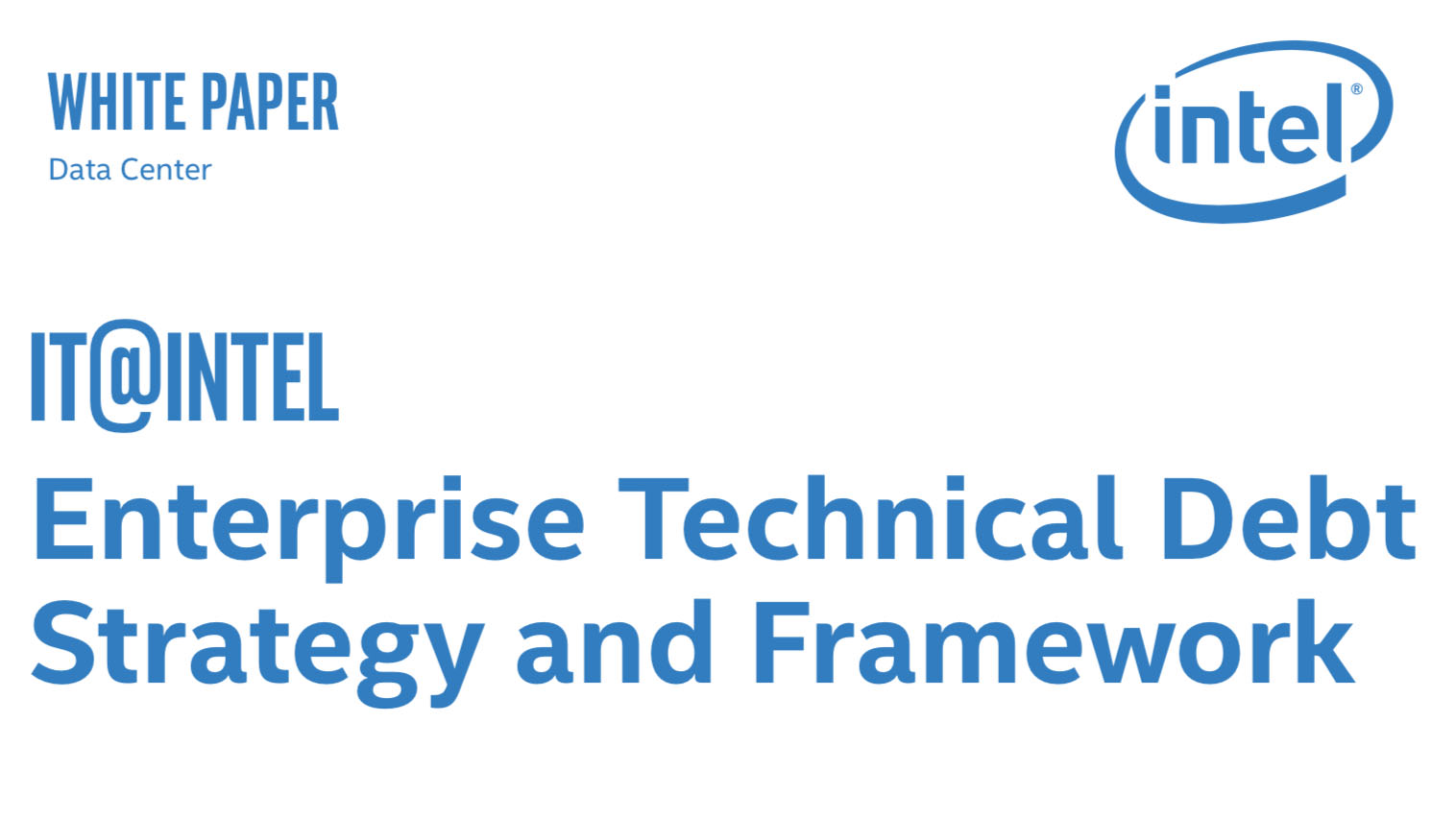Enterprise Technical Debt Strategy and Framework

IT Best Practices: Large organizations gradually accumulate technical debt for various reasons. Intel largely runs its business with enterprise platform solutions that comprise a mix of commercial off-the-shelf (COTS) and custom applications. Over time, the number of platforms and applications delivering enterprise capabilities has grown significantly, leading to duplication of solutions, overlap of capabilities across multiple platforms, and layers of customization. These all have contributed to technical debt, which has a negative impact on business velocity, modernization, digital transformation, and ability to be highly innovative—we’re spending the majority of our budget on Run, instead of on developing new capabilities.
Intel IT’s systematic approach to reducing technical debt includes a well-defined framework that encompasses the full scope and complexity of Intel’s business.
Since implementing our technical debt framework in 2017, we have eliminated over 665 application/platforms and have seen close to a 30 percent reduction in the enterprise landscape. Phasing in technical debt-reduction activities allowed us to focus on big wins immediately while laying the groundwork for complex items that require broader
alignment with dependencies. Our strategy includes establishing standards, roadmaps, and target EA blueprints to guide technical debt reduction and prevention.
We approached technical debt holistically with a comprehensive view of the Intel IT enterprise, which enabled us to successfully establish and execute
the framework. This has led to greater awareness of technical debt across the organization and a culture shift that is a key element in preventing technical debt from accruing in the future.
For more information on Intel IT Best Practices, please visit intel.com/IT
Posted in:
Intel, Intel IT, IT White Papers, IT@Intel

